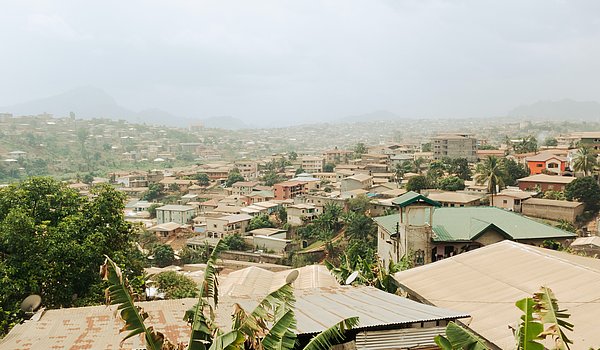In Central Africa, African Development is present in Cameroon, Gabon, Congo-Brazzaville and Chad, all members of the Economic and Monetary Community of Central Africa (CEMAC), as well as in the Democratic Republic of Congo (i.e. Congo-Kinshasa). This African region differs from those in the West and East in that its economy is dominated by the oil sector. It has also suffered the least from the global pandemic, with fewer Covid-19 deaths than the rest of the continent, and its economy is expected to recover by the first quarter of 2021.
The Central African region is an ideal terrain for exporting companies as all the countries in the region are actively building and developing their markets. To do so, they are multiplying reforms and strategic plans that would allow their economies to grow and a number of them plan to facilitate foreign investments legally and fiscally.
Central Africa has enjoyed phenomenal economic growth for several years and the prospects for continued and even accelerated growth are particularly optimistic. It is an increasingly attractive region thanks to its abundant natural oil and mineral resources and the immense potential for expansion that it offers to foreign companies. In 2021, CEMAC achieved, on average, a GDP growth of 2.5%, with Cameroon posting a GDP growth of 3.9%. The Democratic Republic of Congo, on the other hand, recorded GDP growth of 4.9%. Conversely, while inflation increased in each of these countries during the two years of the health crisis, it was largely contained overall.
The Central African market is also notable for its demographic qualities. The region's population is growing at a steady pace: it currently has 41 million inhabitants and will surely reach 103 million by 2050, more than half of whom are under 40 years old. Central Africa thus has a large pool of consumers.
Beyond this dynamic and promising market, Central Africa offers several other advantages for French investors. CEMAC member states share a common currency, the CFA franc, which has a fixed parity with the Euro, thus eliminating exchange rate risks. On the other hand, Cameroon, Gabon, Congo-Kinshasa, Congo-Brazzaville and Chad are French-speaking countries and culturally close to France. It is also important to note that Central Africa is subject to the same time slot as Paris.
Cameroon is the largest economy in Central Africa, the country is very stable politically and has a very dynamic population. It has the most diversified economy in the region with a large number of booming sectors of activity that are attractive to foreign exporters. The main areas in which to invest in Cameroon are telecommunications, digital, agribusiness, heavy infrastructure, energy, oil and gas, and health and education.
To the north, Gabon is one of the richest countries in Africa and the third largest economy in Central Africa. The country has resilient political institutions, which provide stability, and a large working population, which provides a certain dynamism. On the other hand, the Gabonese government, like its neighbors, is keen to attract foreign investors and to this end has implemented favorable customs policies. The most attractive sectors are the exploitation of natural resources, digital technology, public works (infrastructure, equipment), telecommunications and forestry.
In the same vein, the People's Republic of Congo (Congo-Brazzaville) is in the process of rebuilding after several years of conflict and is encouraging foreign companies to invest with an advantageous fiscal framework. Congo is a peaceful land with strong economic development and diverse natural resources (from oil to phosphate to wildlife). Several areas have potential for export operations: services, transportation, real estate, agribusiness and fisheries, tourism, public works, and oil and mining.
Outside of CEMAC, the Democratic Republic of Congo (Congo-Kinshasa) has many of the same characteristics as its namesake. A stable political framework, an emerging economy, a reconstruction drive favorable to investment, and rich natural resources. In addition to this, the DRC has a strategic geographical position as it is central (9 bordering states) and is open to the sea, thus penetrating several regional markets and reaching several hundred million consumers. Its growth sectors are food, pharmaceuticals, mining and forestry, agriculture, energy, water, sanitation and transport.
Finally, Chad wishes to open up to foreign investment and encourages exporting companies to seize local business opportunities. To this end, the government is working to introduce reforms that will increase the country's attractiveness. The main areas currently being invested in by foreign investors are services, telecommunications and banking.
African development offers a complete accompaniment, from the formulation of the project to the effective marketing of goods and/or services in African markets. This allows interested companies to be aware of the rules of exporting to Africa and to benefit from a good network to ensure the success of the project.
